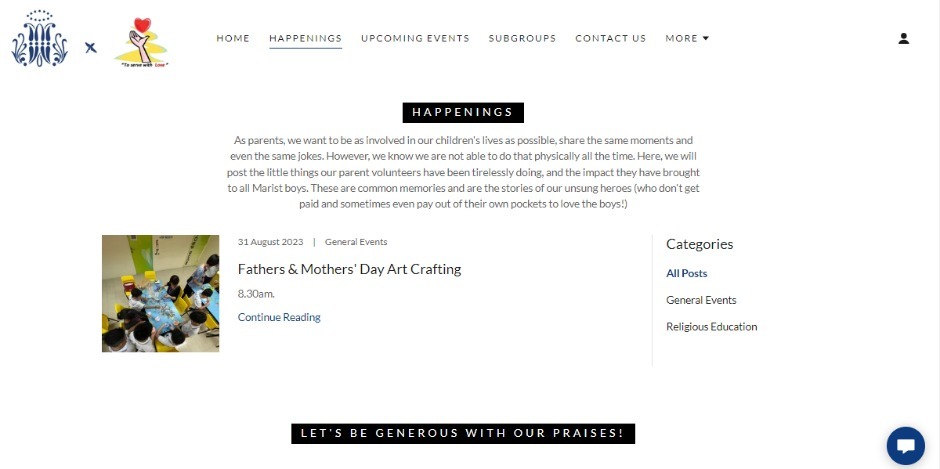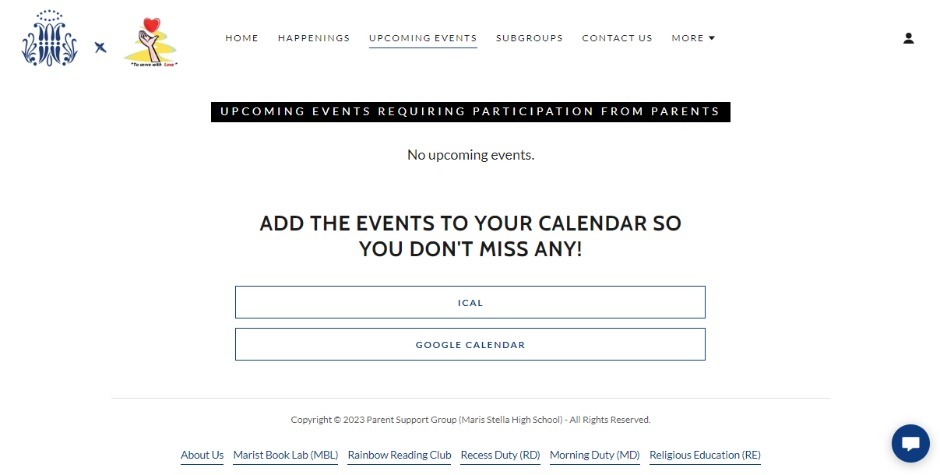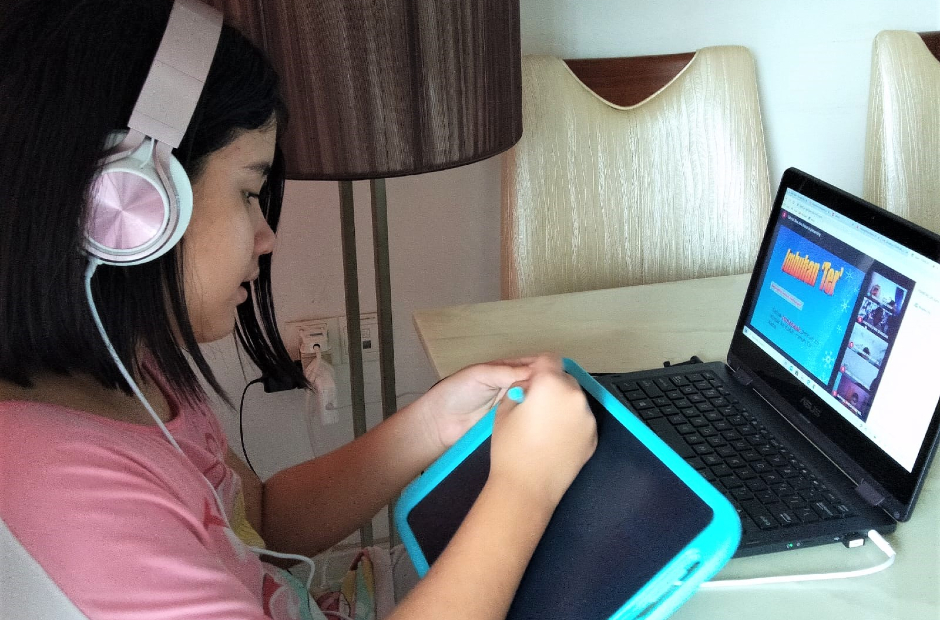In today’s digital age, the idea of having a dedicated space to connect with other parents and share resources is more important than ever.
One of the main motivations behind creating a website for your parent support group (PSG) is to foster a sense of community and provide a platform for open discussion and support.
Convinced but unsure where to begin? Check out these tips to create a website that not only strengthens connections, but also enhances the parenting experience for everyone involved.
1. Define your goals and audience
Before you start, clearly define the goals of your website and understand your target audience. Are you looking to provide information, facilitate event registration, or offer resources? Knowing your objectives will guide the website’s design and content.
The website should serve as a platform through which existing members can engage with more parents. For example, going digital can make it easier for to collect feedback from all parents, not just PSG members.
Streamlining this process significantly reduces the chance of overlooking valuable suggestions, allowing members to respond promptly.
2. Choose the right platform
Select a user-friendly website platform or content management system that suits your needs.
Popular options like Google Workspace, Squarespace, or WordPress offer a range of templates and tools to simplify the website-building process. There is also Godaddy – an integrated platform for the ease of handover or for anyone to step in.
It is also recommended to use a generated password and change it regularly for the security of the data provided by the parents.
3. Create user-friendly content
Parents seek convenience and easy access to valuable information, resources, and community support. A Google calendar feature that allows parents to add events to their own calendars is particularly useful.
Consider interactive features such as forums, discussion boards, or live chat options. This allows parents to connect, ask questions, and share experiences in a supportive environment. And use pop-ups strategically to inform visitors about important updates.
Inviting PSG members to review and provide feedback helps pinpoint areas for improvement.
4. Maintain regular updates
A website could bridge the gap by providing timely news and simplifying procedures like registration and sign-ups. Moreover, it would serve as a virtual noticeboard for upcoming events and activities.
A successful PSG website should be up to date. Regularly update it with announcements, event calendars, photos and news. Encourage members to visit the site for the latest updates, creating a habit of engagement.
Consider introducing a yearly schedule, allowing parents to better anticipate upcoming activities and plan ahead.
5. Promote and educate
Once your website is up and running, promote it within your PSG community. Provide training or tutorials to ensure that everyone can access the resources available.
To spread the word, assign ambassadors from every class and level to motivate parents to explore the website for updates and notifications about events. This helps them see the website as a reliable and important source of information.
Additionally, send members updates via email and WhatsApp whenever new content is posted on the website.
Setting up a PSG website? Learn from Mr Jeremy Ng who helped his son’s school set one up
When Mr Ng returned to Maris Stella High School (MSHS) – this time as a parent after his child started Primary 1 – he was determined to give back.
Mr Ng, a corporate benefits manager, recognises the significance of adapting to the digital age. More importantly, he understands that effective communication is the cornerstone of a thriving support network.
And so, as the vice-chairman of the school’s Parent Support Group (PSG), he wanted to create a website that would transform the way this tight-knit community stayed connected and organised.
A web of support

Mr Ng observed that finding details about PSG activities was often a challenge for parents. This issue became more apparent during the COVID-19 pandemic, which exacerbated the need for digital solutions.
“While the PSG was a pillar of support for parents, there was room for improvement in how we shared essential information,” says Mr Ng.
With the launch of
mshspsg.com, Mr Ng hopes to create a better sense of belonging among PSG members. “When they can see the fruits of our labour through photos and videos that we post from events and activities, it strengthens our connection and deepens our appreciation for the remarkable journey we share as a group,” he says.
From clicks to closer bonds
Working closely with Mr Ng is the group’s digital committee member, Ms Mabel Hong, who oversees the website. Ms Hong’s experience and skills in website management, which she gained from running her own renovation business, have helped them overcome the challenges of starting and managing a website.
They also started a PSG WhatsApp group this year to connect everyone and share info and event sign-ups from the website. “It’s not just the website; it’s a bunch of tools working together to connect members,” says Mr Ng.
The website is also useful for new parents who are thinking about becoming PSG members. It provides details about various subgroups, an ‘About Us’ section and the PSG committee structure to assist them in making an informed decision.
“It’s not solely about fulfilling school-related duties. Being a community enables us to reach out to parents whenever necessary, and we stand ready to support each other in times of need,” says Mr Ng.
As they look to the future, the PSG has plans to expand the website’s features. A top priority is to introduce a yearly schedule, allowing parents to better anticipate upcoming activities and plan ahead. “We talked to the school, and they agreed to proactively share event dates, so we can provide a calendar for parents,” Mr Ng shares.
Valuable lessons learnt from going digital

The journey has not been without challenges. Fine-tuning the website’s design and functionality is an ongoing effort.
They also have to consider security and privacy issues. The PSG uses Google Workspace, which offers built-in security features, to safeguard sensitive information. “In the interest of the safety of our school children, any social media platform has to be handled with care,” he explains.
Through its digital transformation, the PSG learnt several valuable lessons. Mr Ng shares that while having a website holds significant value for the PSG, it can sometimes be unhelpful and ineffective for others.
For example, new parents at the school encountered difficulties when trying to register for events and PSG membership. “There was a need to improve the website’s navigation such as using pop-ups strategically to inform visitors about important updates,” shares Mr Ng.
This is why he stresses the importance of constantly gathering feedback and testing. Mr Ng says, “We believe that our website will become a versatile platform that goes beyond just signing up and sharing information.”
Mr Ng recommends other PSGs to go digital too. He believes that having a digital presence in today’s age can help connect new parents and better support the PSG in its mission. “Creating it may be arduous, but the benefits will outweigh the work done,” he says.









.jpg)